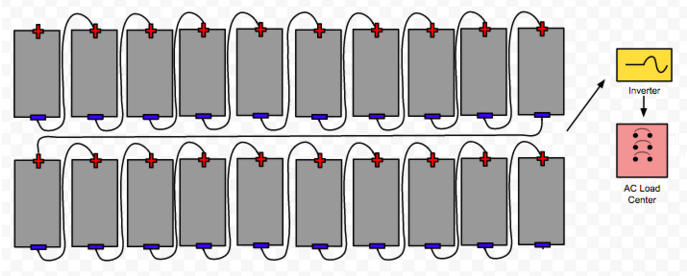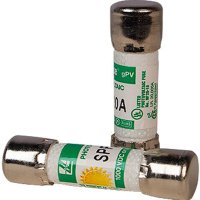
This article will cover the basic principles of voltage and amperage, essential elements of PV systems.
Electricity flowing through a circuit can be understood similarly to water flowing through a pipe. There are two ways that you can increase or decrease the amount of water flowing through a pipe.
One is to increase the size of the pipe. A larger pipe allows more water to flow compared to a smaller pipe. In this analogy, this is the amount of amperage (ie what's actually flowing in a circuit). The bigger the pipe, the more water (amperage) is flowing.
Voltage corresponds to the pressure with which the water (or electrons) is compelled. A higher rate of flow will increase the amount of electrons (ie total power as measured in watts) that is flowing.

In short, amperage is the size of the pipe/conductor while voltage is the pressure with which the water/electrons are compelled to flow through it.
Now, let’s apply this knowledge to the concept of a string of solar panels, something you’ll hear frequently in the PV industry. A string is a circuit of solar panels (or other energy sources such as batteries) connected in series, in which the voltage of each panel or batteries adds up. In the most basic systems, a string can be made up of as few as one or two panels. Systems this small are generally for off grid applications.
The most common residential solar panels are currently 60 cell panels from 260W-300+W DC.
String of one panel (off grid system):
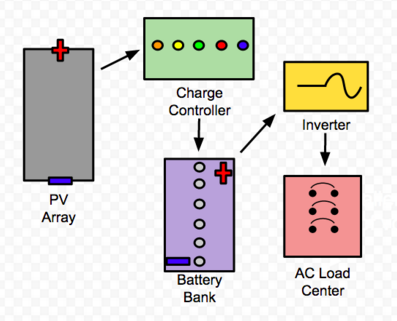
String of two panels (off grid system):
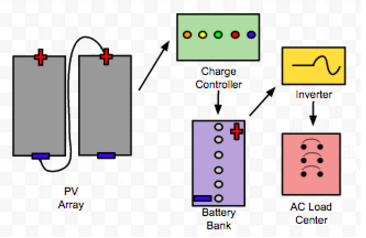
Most charge controllers can take a maximum of 3 panels in a string.
String of 3 panels (off grid system):

Grid tied inverters generally can take anywhere from 5 to 16 or more panels on a given string.
String of 5 panels (grid tied system with no charge controller or battery bank):
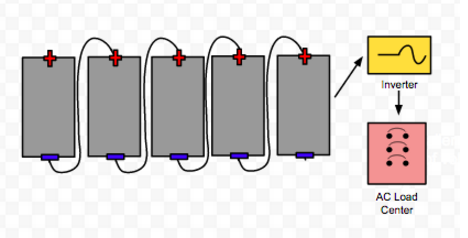
Some applications can have strings of 20 panels or more!
String of 20 panels (commercial grid tied system):
